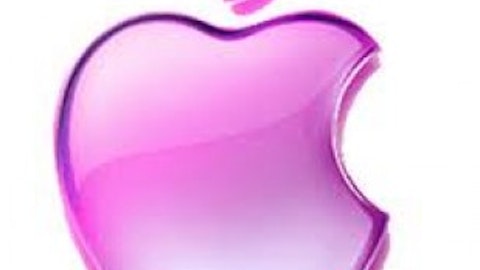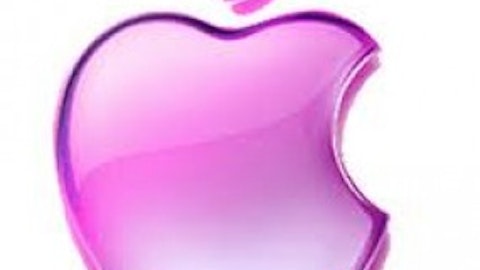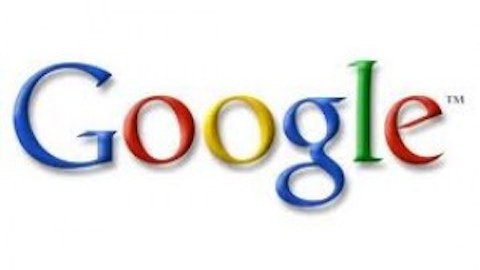With the release of the iMac in 1998, the iPod in 2001, the iPhone in 2007, then the iPad in 2010, what’s next? iTV in 2013? Here is why we think this is a must for Apple Inc. (NASDAQ:AAPL).
There has long been speculation of an Apple TV, with recent suggestions that Apple could release something in 2013. The company has slowed R&D spending as a percentage of its revenue, decreasing from 3.1% in 2009 to 2.7% in 2010, then down to 2.2% in 2011. This could be because the company is growing revenue faster than it can find projects worthy of R&D capital, or it could be that the historically higher levels of R&D were going toward the development of the mysterious Apple TV, with a slowing R&D burn rate suggesting Apple is getting close.
The one hesitation that Apple may have is the margins of the TV industry. Apple Inc. (NASDAQ:AAPL) currently enjoys gross margins on its iPhone of 49%, iPad of 40% and computers of 24%; however, TV manufacturers’ gross margins average around 20%. The question then becomes does it make sense for Apple to build a full-blown TV or a product that will compliment current TVs?
Apple already revolutionized two key devices that most people use everyday: the personal computer and mobile phone. The company has introduced another device that has also become a big part of people’s lives: the tablet. The next big step for the company is changing another device that people use everyday: the television. Next to mobile devices, the television is one of the most widely owned and used devices. Over 99% of U.S. households have at least one television, with the average being over two TVs. The average time spent watching TV per day is over 5 hours, with 67% of people watching TV while eating dinner.
Like Apple’s other key devices that are an integral part of our lives, the TV makes the most sense for the next industry the company should reinvigorate. Apple Inc. (NASDAQ:AAPL) really does need another big catalyst to meet future growth expectations and the TV opportunity is too great. The company has grown earnings at a 73% CAGR for the last five years, mainly due to continuous innovation.
At a time when Apple Inc. (NASDAQ:AAPL) continues to break earnings records, we cannot help but look to the future to see where Apple’s projected 5-year EPS growth of 23% will come from. Apple has seen tremendous demand for its new iPhone 5 and is setting record sales data, yet the stock typically falls on the slightest news of a bottleneck.
This is perhaps because the company has too much riding on its iPhone brand. Of Apple’s four key device categories, it derives the most revenue from mobile sales at 63%. Although tablets are still in their infancy stage relative to computers and phones, the tablet device will undoubtedly continue to eat into computer sales and be cannibalistic to Apple’s computer segment. An Apple TV could give the company a different dynamic.
The TV market is estimated to be worth about $23 billion. Granted this is below the computer industry’s size of $30 billion, which Apple Inc. (NASDAQ:AAPL) owns 19% of the market share, but it presents some of the greatest potential for penetration. Unlike the computer and tablet industry that has a variety of products and unique differentiations, there is much less of this when it comes to TVs. Two companies with the largest market share in this industry are Sony Corporation (NYSE:SNE) and Panasonic Corporation (NYSE:PC). Sony owns about 8.2% of the market, while Panasonic owns 5.2%.
Both of these companies have been flailing of late, mainly due to a saturation of the U.S. market and a faltering economy. Neither company has a measurable trailing P/E due to repeated negative earnings. Sony posted negative ADS of $0.31, versus $0.19 estimates for the most recent quarter. Sony trades at a forward P/E of 94. Panasonic saw a 6% decline in sales last quarter from the same quarter a year ago, and beat ADS estimates of $0.4 by posting $0.7. The company trades at a forward P/E of 8.3, but has a long road back from the negative $4.23 ADS it posted last fiscal year.
If Apple does go the route of developing a full-blown TV, it would indeed have an advantage over other companies that are infringing upon the TV industry with secondary devices. One of the companies making TV more interactive is Microsoft Corporation (NASDAQ:MSFT). Although Microsoft has no plans of manufacturing an actual TV, they are making it a more interactive device with its Xbox console. A new console, called Xbox 720 by the media, has been speculated to be ready for launch by Christmas 2013. Xbox so far has introduced motion control and partnerships with streaming video providers Netflix and Hulu. The company broke out of its sub-$30 trading pattern earlier this year, in part thanks to its new initiative to find new high-growth markets. Microsoft is expected to grow next year’s EPS at 10%, and trades at a discount to its peers with a 9 forward P/E.
It has been rumored that Google Inc (NASDAQ:GOOG) might be in the process of entering the television market as well. While Apple and Google compete in a couple different segments, Apple has long been in the hardware and device industry, and we believe Google should stick to its forte of advertising. We believe the company will have its hands full integrating the Motorola Mobility acquisition that it completed for $12.5 billion in May, which should prove beneficial to Google. The company trades at a trailing P/E of 23, versus a forward P/E of 15.
We believe that if Apple Inc. (NASDAQ:AAPL) can put together even a complementary product for the TV, it can quickly generate a strong presence in this market. Regardless of what Apple does, whether they build their own TV or form strategic partnerships, the ability to tie in its other devices, such as the iPhone and iPad, could be monstrous for cross-selling.
It is no surprise that Apple is the favorite stock among billionaire fund managers, with over fifty funds that we track having 4% of their 13F portfolios invested in Apple at the end of June. The slew of top fund managers owning Apple is abundant, from George Soros to David Einhorn, and all those in between, including: Steven Cohen, Bill Miller, Ken Fisher, Jim Simons, Joel Greenblatt and D.E. Shaw (check out all the funds owning Apple here).






